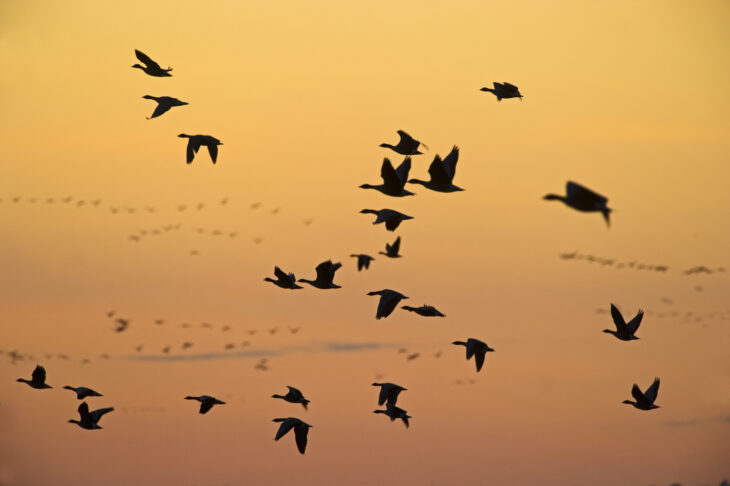Why we need winter Part 2
,

Despite its bad press winter brings lots of reasons to be cheerful. Today, for me, it’s hanging out the washing on a clear winter morning. The sheets tugging and snapping in the breeze; damp, clean laundry smells; warm hands but cold fingers fumbling with wooden pegs. Best of all, the sound of pink-footed geese passing overhead. Looking up to see hundreds of them moving in constantly changing waves and curves across the sky.
Scotland holds over 50% of the world population of these dainty geese in the winter. Our geese are mostly from Iceland, though others breed in Greenland and Spitsbergen. They head south to escape the brutal cold of the Arctic North, to feed on the still-green fields and to roost on ice-free salt marshes and lochs of our milder winters. We see them overhead as they move from roosts to feeding spots each day. There are now also significant numbers in England – especially in Lancashire and Norfolk.
Though we call them pink-footed geese their scientific name, Anser brachyrynchus, actually means ‘small-billed goose’. Since the very similar greylag goose (unhelpfully called Anser anser – goose goose) also has pinky feet it’s worth remembering that if you’re trying to tell them apart. Greylags have big orange-pink conks, pink-foots dainty black and pink ones. If you listen carefully you can tell them apart from their flight calls too – pinkies have a vaguely two-syllable call ‘wink-wink’, greylags are more raucous and barky.
The geese are here from October to April. Numbers have increased eight-fold in the last sixty years thanks both to changes in the law in the 1970s banning the sale of wild geese, and their own adaptability. The birds have widened their diet, particularly in Norfolk, to make the most of new winter crops like sugar beet. So now there are many more places in the UK where hanging out the washing in winter can give you a reason to be cheerful!
